------ [Guide] ------
In order to avoid getting lost in the vast wilderness, humans have developed tools such as compasses. The arrival of satellite positioning has solved the age-old question: "Where am I?" In today's highly urbanized world, indoor spaces are becoming increasingly complex. While we've conquered nature, we've found ourselves lost in the concrete jungles we built.
During the Eastern Jin Dynasty, when a man named Su Shi was sailing westward, he wrote about his boat journey back to China, expressing how the sea is boundless and it's hard to distinguish directions. He could only rely on the stars and the moon for navigation.

Origin
To prevent themselves from being lost in the vast nature, humans have invented tools such as compasses. The advent of satellite positioning has solved the problem of "where am I?" In today's highly urbanized environment, indoor spaces are becoming more and more complex. Humans have overcome nature, but they have lost their way in the reinforced concrete they built.

In hospitals, even with floor maps and guide signs, most of the time spent on medical treatment is still wasted searching for departments. In parking lots, people who can't find their cars and keep circling are common.
With the growing demand, indoor positioning has gained significant attention in recent years.
Indoor positioning, as the name suggests, refers to location tracking inside buildings. Nokia explained how they implemented indoor positioning years ago, highlighting the clear need for this technology.
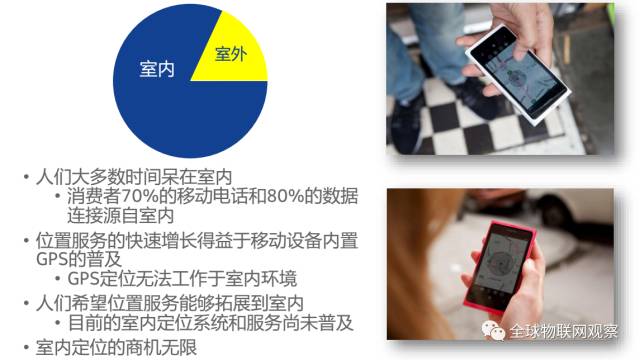
Source: Nokia
Satellites cannot provide accurate location data indoors. People spend most of their time indoors, yet related services are not widely adopted. It can be said that indoor positioning holds massive business potential.
In commercial applications, indoor positioning technology is categorized into consumer and industrial grades based on different use cases.
Consumer market applications include shopping mall navigation, reverse parking systems, and family anti-loss devices. These require moderate accuracy (around 1 meter), and compatibility with popular mobile devices is essential.
Industrial applications involve flow monitoring, smart manufacturing, emergency response, and personnel or asset management. Industrial-grade systems demand higher precision, the ability to distinguish individuals in crowds, and integration with dedicated tags and sensors, often without considering compatibility with existing smartphones.

Technical Martial Art
Unlike Outdoor satellite positioning, which dominates globally, various technologies for indoor positioning are flourishing.
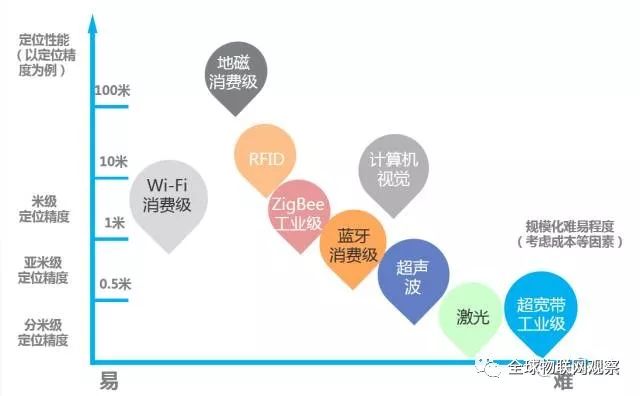
Indoor Positioning
The commercial value of indoor positioning is directly proportional to its accuracy. At 3-5 meters, you can tell if you're at the entrance of a 7-Eleven or Jack Jones. At 1 meter, you can determine whether you're standing in front of Coca-Cola’s shelves or Durex’s.
Currently, common indoor positioning methods include proximity detection, centroid method, multilateration, fingerprinting, and dead reckoning.
**Comparison of Main Indoor Positioning Methods**
| Positioning Method | Description | Applications | Characteristics |
|--------------------|-------------|--------------|------------------|
| Proximity Detection | Determines if a device is near a specific signal source. | Base station positioning | Simple, low precision, dependent on reference point density |
| Centroid Localization | Calculates coordinates based on known beacon positions. | Base station positioning | Low precision, dependent on reference point density |
| Multilateral Positioning | Measures distance between target and known reference points. | Ultrasonic | High precision, wide application |
| Pole Method | Measures distance and angle relative to a known point. | Laser scanning | Simple, high precision, wide application |
| Fingerprint Positioning | Compares real-time data with pre-recorded database. | Geomagnetic | High precision, large pre-work, not suitable for dynamic environments |
| Dead Reckoning Algorithm | Estimates position using speed, direction, and time. | Inertial navigation | Stable data, no dependency, error accumulates over time |
Global Internet of Things Watchmaking
Each method has its own advantages and disadvantages. Depending on the scenario and budget, multiple techniques can be combined. The main technologies currently used include:
**WiFi Positioning Technology**
WiFi is one of the most mature and widely used technologies. There are two main types of WiFi-based indoor positioning.
WiFi positioning typically uses the "nearest neighbor" approach—determining location based on the closest hotspot or base station. If multiple signals are available, trilateration can improve accuracy.
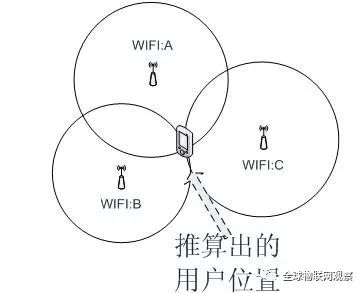
Since WiFi is already widespread, there's no need for additional infrastructure. When users enable Wi-Fi or cellular networks, their devices can contribute to positioning data. This makes WiFi positioning cost-effective and scalable. However, it is susceptible to environmental interference. To enhance accuracy, companies perform WiFi fingerprint collection, recording signal strength at various locations and comparing it with new data.
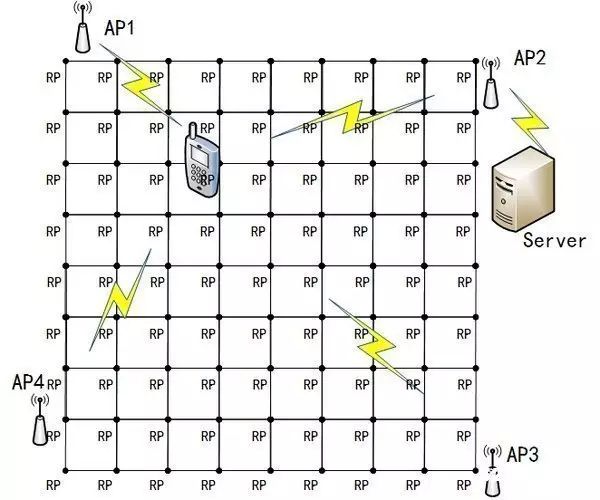
However, collecting these fingerprints requires significant manual effort and regular maintenance. Few companies can consistently update data across numerous malls in China.
While WiFi can handle large-scale positioning, its accuracy is limited to about 2 meters, making it suitable for general navigation rather than precise location tracking. It is ideal for places like hospitals, theme parks, factories, and shopping centers.
**Representative Companies**: WIFISLAM, Sensewhere, Map Gathering Intelligence
Other technologies like geomagnetic positioning are similar to WiFi fingerprinting and will not be discussed here.
**Inertial Navigation Technology**
This is a client-side technology that uses motion data from inertial sensors (e.g., accelerometers, gyroscopes) to calculate speed, direction, and acceleration. Based on dead reckoning, it estimates location through continuous calculations.
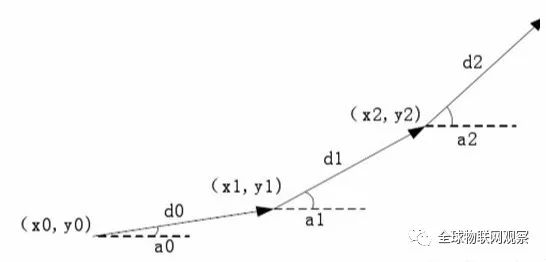
As walking time increases, inertial navigation errors accumulate. Therefore, it is often combined with WiFi fingerprinting, where the system recalibrates the position using nearby WiFi access points. This technology is commercially available and widely used in robotic vacuum cleaners.
**Bluetooth Beacon Technology**
Bluetooth beacons are now widely deployed and relatively mature. Compared to WiFi, they offer slightly better accuracy.
Initially developed by Nokia, it gained popularity after Apple introduced the iBeacon protocol in 2013. This protocol targets retail applications and has attracted significant attention.
The iBeacon system requires Bluetooth beacons, mobile apps, and cloud-based backend support. Beacons broadcast their ID, and apps respond accordingly by retrieving location and marketing information from the cloud.

By measuring signal strength, the device can estimate its distance from the beacon. With three or more beacons nearby, the device's position can be calculated using trilateration.
Despite Apple's influence, the main challenge remains beacon battery replacement. Deploying tens of thousands of beacons means heavy maintenance costs.
**Representative Company**: Estimote, Interest-Seeking Electronics
ZigBee is similar to Bluetooth and will not be covered here.
**RFID Technology**
RFID positioning involves reading feature information from RFID tags using fixed readers. It determines location through neighboring methods, multilateration, or received signal strength.
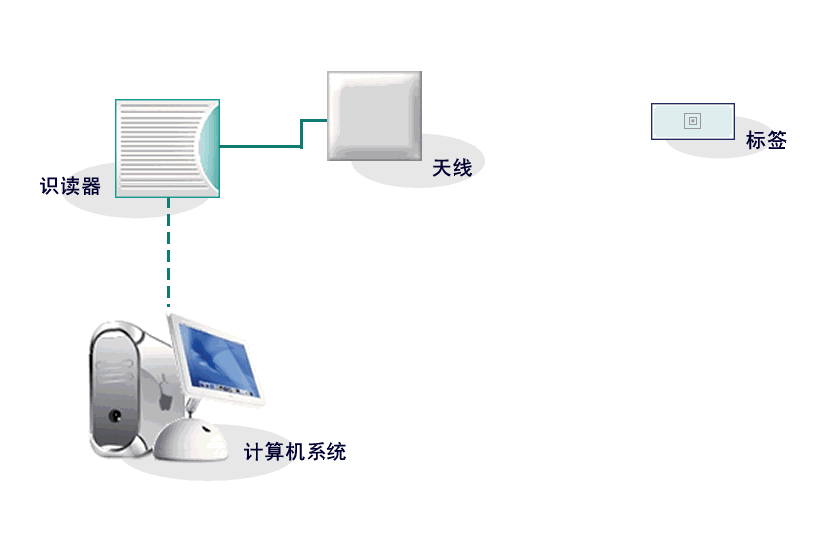
RFID offers close-range, high-precision positioning with fast response times. It has advantages like non-line-of-sight transmission and small tag size. However, it lacks communication capability, has poor anti-interference, and faces challenges in integration and standardization.
It is widely used in emergency response, asset management, and personnel tracking.
**Infrared Technology**
There are two main approaches to infrared positioning. One involves attaching an infrared-emitting tag to the object and calculating its position via multiple sensors.
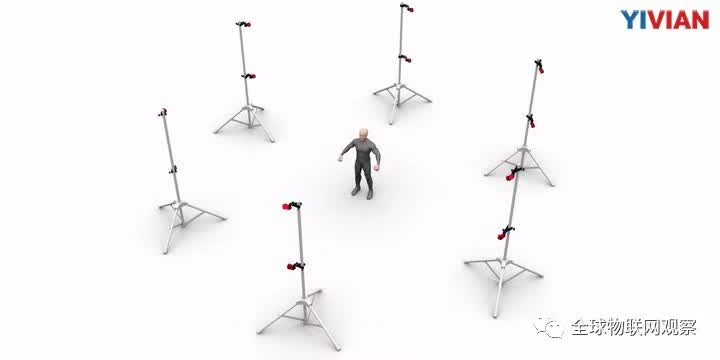
This method achieves high precision in open areas but is easily blocked by obstacles and affected by heat sources. It also requires many densely placed sensors, increasing hardware and construction costs.
Another method uses an infrared mesh, where transmitters and receivers cover the space to track moving objects. This method doesn’t require any tags on the object and is often used in security. However, it is expensive and mainly used in high-security environments.
**Ultrasonic Technology**
Ultrasonic positioning uses reflection-based ranging to determine the object's position via multilateration. The system includes a main rangefinder and several receivers.
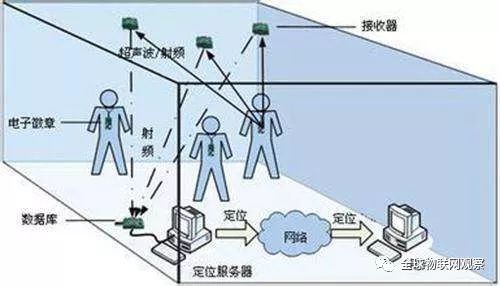
Ultrasonic positioning offers high accuracy and a simple structure, but it is affected by multipath effects, Doppler shifts, and temperature. It also requires a lot of hardware, making it costly.
**Representative Company**: Shopkick
**Ultra-Wideband (UWB) Technology**
UWB uses anchor nodes and bridge nodes to communicate with blind nodes, determining location via triangulation or "fingerprint" methods.
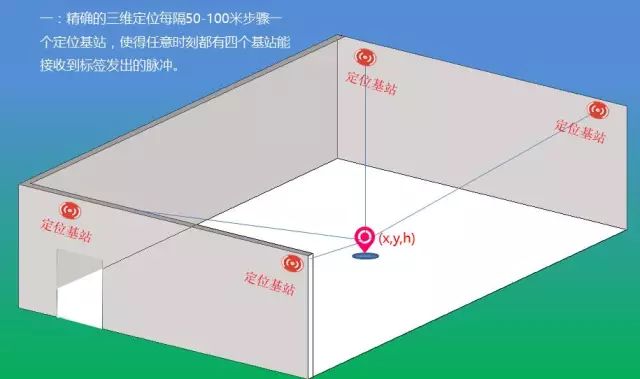
From a technical standpoint, UWB is one of the most ideal industrial positioning technologies, offering high accuracy, safety, and low power consumption.
However, UWB has limitations, including difficulty in achieving large-scale coverage and high construction costs, which limit its adoption.
**Representative Companies**: Ubisense, Zhonghaida Lianrui Electronics, Tsinghua University-related firms
**LED Visible Light Technology**
Visible light positioning encodes each LED light with an ID, which is detected by a smartphone camera. The phone then retrieves location data from a map database to complete positioning.
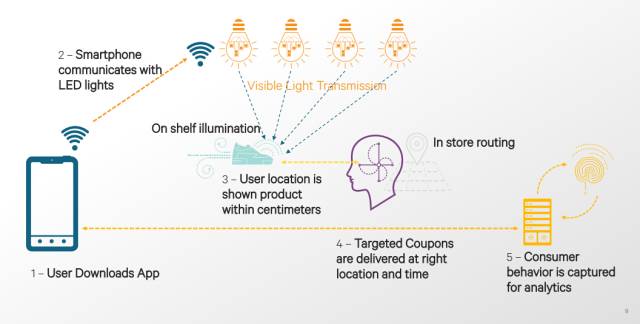
Qualcomm has achieved centimeter-level accuracy using angle-of-arrival techniques. Since no extra infrastructure is needed, it allows for high precision and scalability.
Many stores in North America already use visible light technology. After downloading an app, users can detect their exact location and receive promotions from merchants.
**Representative Enterprise**: Huace Optical Communication
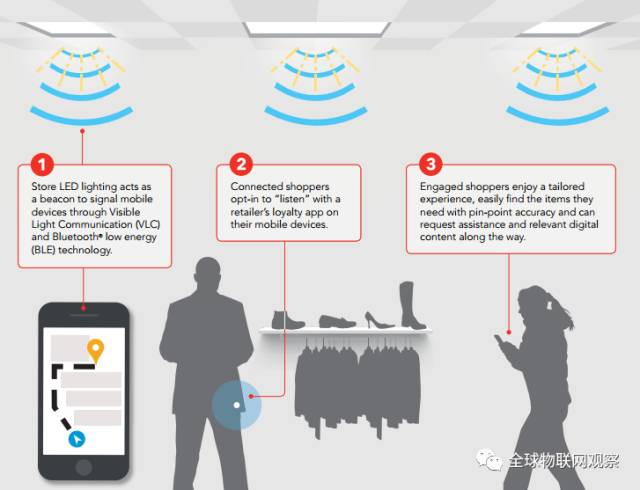
**Technology Convergence is the Trend**
Indoor positioning is constantly evolving and has promising application prospects. However, there are few large-scale commercial implementations. The industry faces several challenges:
**1. Complex Indoor Environment**
Indoor layouts are varied, with many obstacles like furniture, walls, and people. Interference from lighting, temperature, and sound also affects positioning accuracy.
**Comprehensive Comparison of Technologies**
| Technology | Cost | Advantage | Disadvantage |
|------------|------|-----------|---------------|
| WiFi | Low | Broad network, strong communication | Vulnerable to interference |
| RFID | Medium | Low cost, high precision | No communication, short range |
| Bluetooth | Low | Small, easy to integrate | Short range, unstable |
| Inertial | Low | Independent of environment | Error accumulation |
| Infrared | High | High precision | Line-of-sight, easily interfered |
| Ultrasonic | High | High precision | Affected by temperature |
| UWB | High | High precision, strong penetration | High cost, limited coverage |
| Visible Light | High | Fast communication, strong anti-interference | Limited coverage |
**2. Lack of Unified Standards**
Multiple technologies exist, each with its own limitations and competition. The market is chaotic, hindering industry growth. Unlike satellite positioning, which is standardized, no single indoor technology has emerged as the dominant solution.
**3. Balancing Accuracy and Cost**
High-precision technologies require expensive equipment or extensive manual work, limiting their adoption. Low-cost solutions need improvement in accuracy. Reducing costs while maintaining high precision is a key direction for future development.
The global trend is to combine technologies, leverage complementary strengths, and address complex environments. The ideal solution would be low-cost, high-accuracy, and widely compatible.
**Indoor Positioning Related Articles:**
What Are the Indoor Positioning Technologies?
Analysis of Advantages and Disadvantages of Six Indoor Positioning Technologies
Current Status and Prospects of Indoor Positioning Technology
Outdoor
Outdoor Waterproof Digital Signage,Floor-standing outdoor advertising machine,High brightness advertising all-in-one
HuiZhou GreenTouch Technology Co.,Ltd , https://www.bbstouch.com